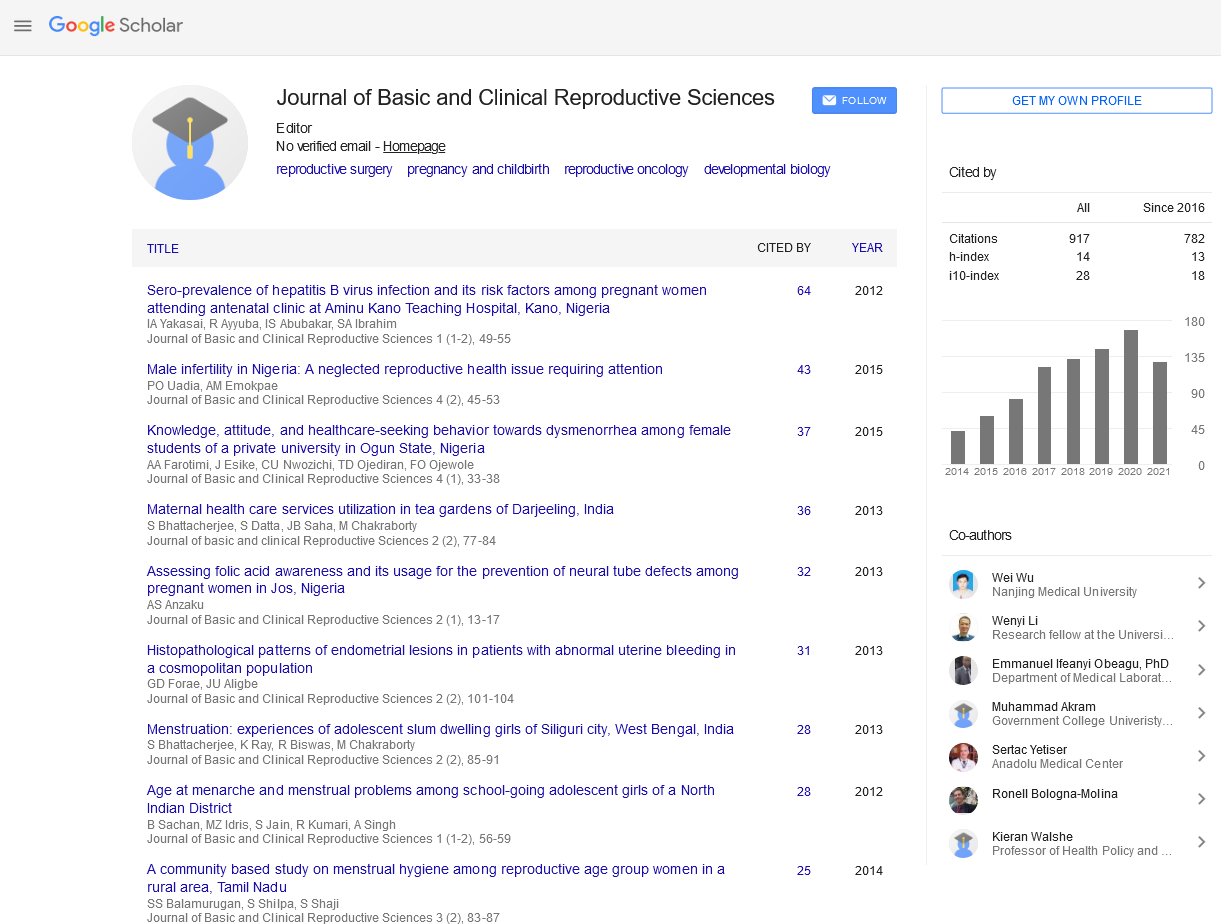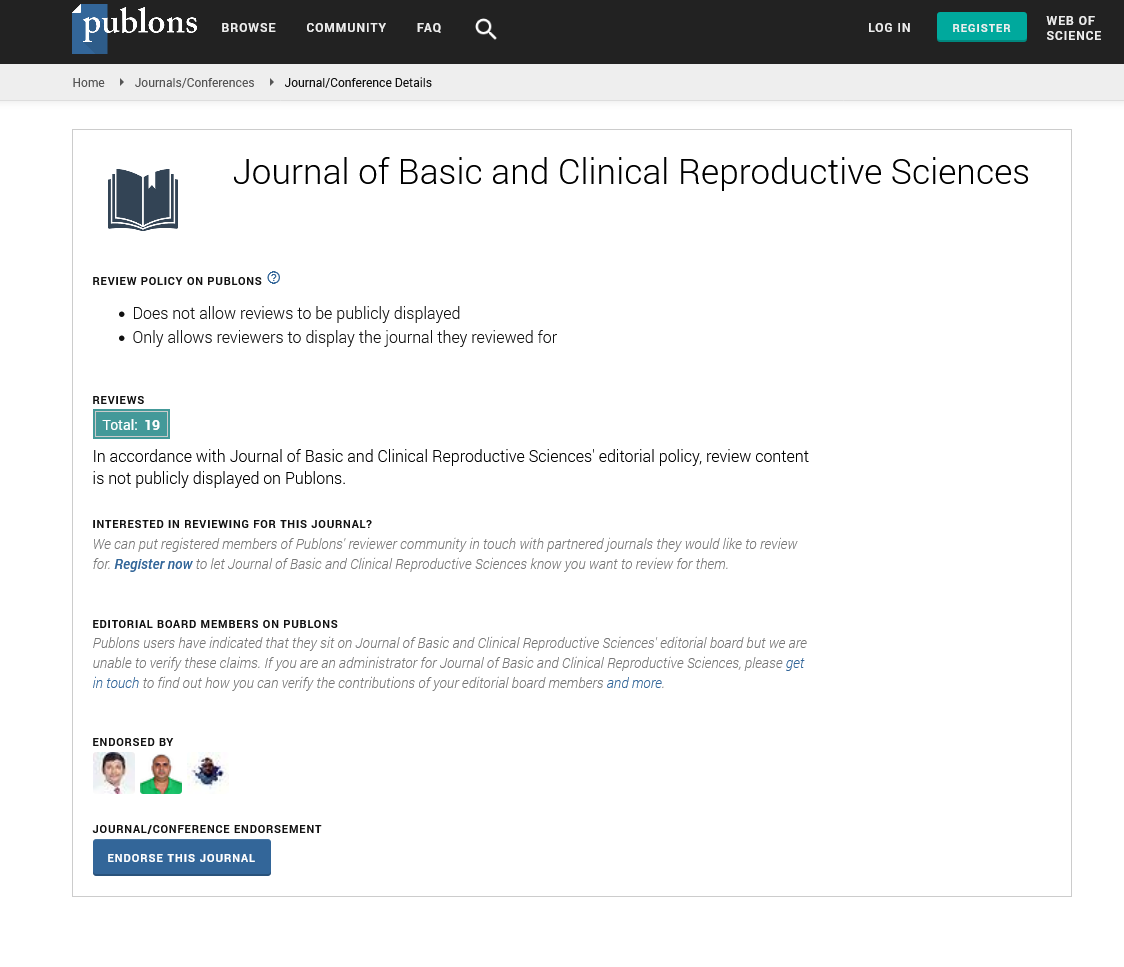Commentary - Journal of Basic and Clinical Reproductive Sciences (2024) Volume 13, Issue 3
Exploring the Use of Artificial Intelligence in Reproductive Health Diagnostics
Received: 20-May-2024, Manuscript No. JBCRS-24-143319; Editor assigned: 22-May-2024, Pre QC No. JBCRS-24-143319 (PQ); Reviewed: 05-Jun-2024 QC No. JBCRS-24-143319; Revised: 14-Jun-2024, Manuscript No. JBCRS-24-143319 (R); Published: 21-Jun-2024
This open-access article is distributed under the terms of the Creative Commons Attribution Non-Commercial License (CC BY-NC) (http://creativecommons.org/licenses/by-nc/4.0/), which permits reuse, distribution and reproduction of the article, provided that the original work is properly cited and the reuse is restricted to noncommercial purposes. For commercial reuse, contact reprints@pulsus.com
Description
Artificial Intelligence (AI) is transforming various fields in reproductive health diagnostics by leveraging advanced algorithms and machine learning techniques. AI is improving diagnostic accuracy, treatment plans, and patient outcomes in reproductive medicine. One of the most promising applications of AI in reproductive health is in the selection and evaluation of embryos during In Vitro Fertilization (IVF) procedures. Traditional methods rely on the subjective assessment of embryologists to evaluate embryo quality, which can vary based on experience and expertise. AI algorithms can analyse large datasets of embryo images, identifying refined patterns and features that may not be visible to the human eye. Time-lapse imaging combined with AI can track embryo development in real-time, improving the ability to select the most viable embryos for transfer. This can potentially increase implantation rates and improve overall IVF success rates. AI is also being used to predict fertility outcomes and diagnose reproductive disorders. Machine learning models can analyse patient data, including hormonal levels, genetic information, and historical fertility data, to provide personalized assessments of fertility potential. These models can help in diagnosing conditions such as Polycystic Ovary Syndrome (PCOS) or endometriosis by identifying patterns in patient data that may indicate these disorders. AI-driven diagnostic tools can provide more accurate and early detection of reproductive health issues, leading to timely interventions and improved management. AI has shown vital promise in automating sperm analysis, which traditionally involves manual assessment under a microscope. Automated sperm analysis systems use AI algorithms to evaluate sperm motility, morphology, and concentration with high precision. These systems can process large volumes of data quickly, providing more consistent and objective assessments compared to manual methods. This not only improves the accuracy of sperm evaluations but also speeds up the diagnostic process, allowing for more efficient treatment planning. Ovarian reserve testing is important for assessing a woman’s fertility potential. AI is improving this area by analysing data from tests such as Anti-Müllerian Hormone (AMH) levels and ultrasound imaging of the ovaries. AI algorithms can understand complex datasets to provide a more comprehensive view of ovarian reserve and predict response to ovarian stimulation. This can help in modifying fertility treatments and improving outcomes for women undergoing ART. AI’s ability to analyse large datasets and identify patterns can be applied to developing personalized treatment plans. By integrating data from various sources, including genetic information, hormonal profiles, and previous treatment outcomes, AI can help tailor fertility treatments to individual patients. This personalized approach aims to optimize treatment effectiveness and minimize the risk of side effects, ultimately improving the chances of successful pregnancy. While AI provides numerous benefits in reproductive health diagnostics, there are challenges and ethical considerations to address. Ensuring the accuracy and reliability of AI systems is vital, as errors in diagnostic tools can have significant consequences for patients. Additionally, issues related to data privacy and security must be carefully managed to protect sensitive patient information.
Conclusion
Artificial Intelligence is revolutionizing reproductive health diagnostics by improving the accuracy of embryo selection, enhancing fertility predictions, and optimizing treatment plans. The future of AI in reproductive health diagnostics is promising. As technology continues to advance, AI is expected to play an increasingly central role in enhancing diagnostic precision and personalizing care. Innovations in AI algorithms, combined with the integration of new data sources, will likely lead to even more sophisticated diagnostic tools. Continuous collaboration between researchers, clinicians, and technology developers will be essential to realize the full potential of AI in reproductive medicine. While challenges remain, the potential benefits of AI in transforming reproductive medicine are substantial. As technology advances, AI is set to play a pivotal role in enhancing diagnostic capabilities, personalizing patient care, and ultimately improving outcomes in reproductive health.


